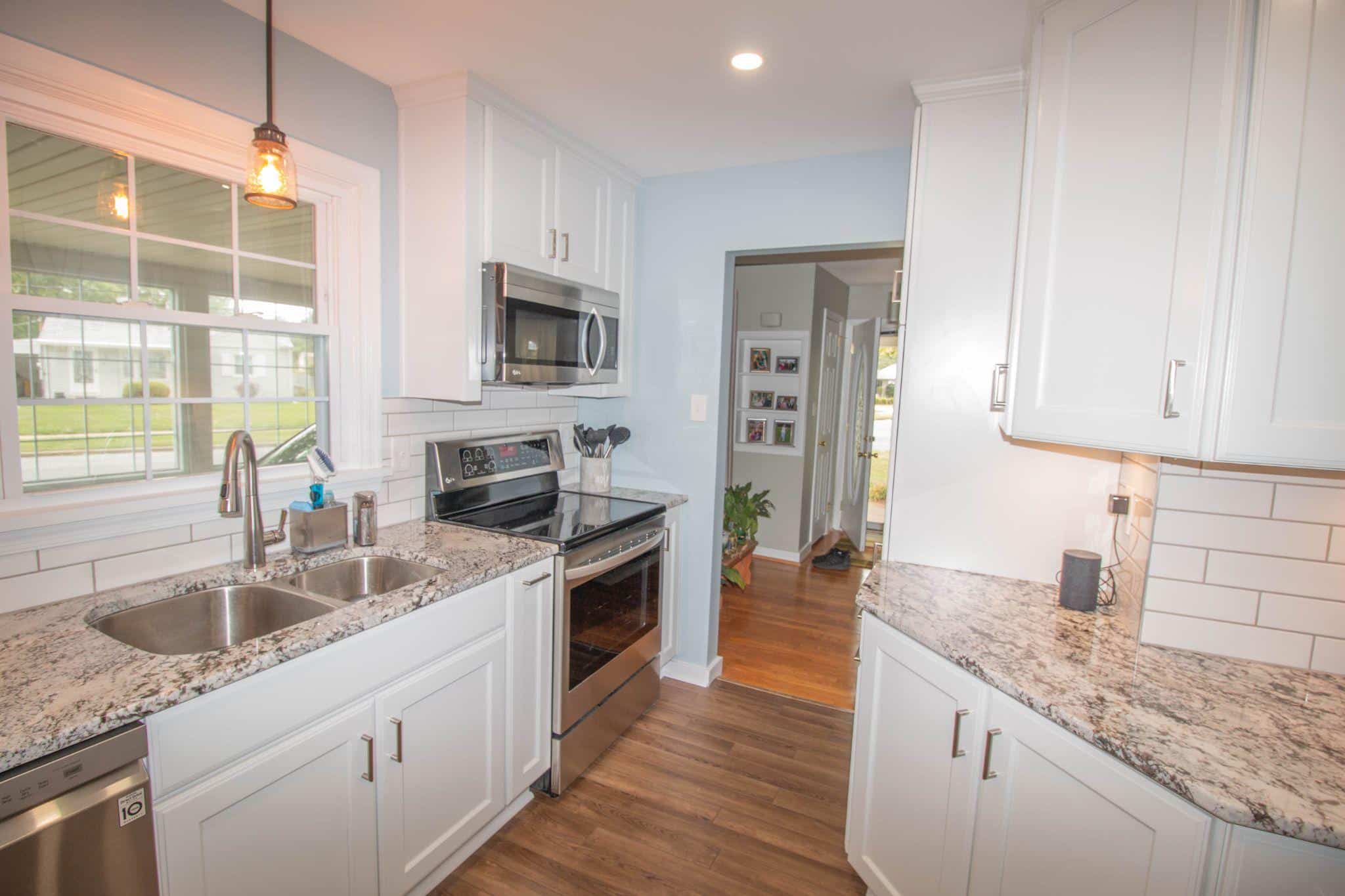Are you thinking about upgrading your kitchen with sleek, contemporary quartz countertops?
You’re in the right place! This guide will walk you through everything you need to know about installing quartz countertops, from the initial preparation to the final touches.
Installing quartz countertops might seem like a daunting task, but with the right knowledge and a bit of patience, you can achieve a stunning result.
Let’s dive into the process step-by-step.
Understanding Quartz Countertops
Quartz countertops are engineered stone surfaces made from natural quartz crystals combined with resin and pigments.
Unlike granite or marble, quartz countertops are non-porous, making them resistant to stains and bacteria.
They also come in a vast array of colors and patterns, offering both beauty and durability.
Before diving into installation, it’s important to understand the material you’re working with.
If you want to explore various options, you can learn more about our quartz countertops available in a wide selection of colors.
Measuring and Planning
The first and most important step is measuring your space accurately.
Use your measuring tape to document the dimensions of your countertops, including spaces for sinks and other fixtures.
It’s often helpful to create a template out of paper or cardboard to visualize the layout and make any necessary adjustments before cutting the quartz. Remember, measure twice, cut once!
Preparing the Countertop Base
A solid, level base is necessary for a successful quartz countertop installation.
Ensure your cabinets are level and sturdy enough to support the weight of the quartz.
Use shims where necessary to achieve a flat surface.
The quartz slabs should sit perfectly flush and level on this base, so take your time to get this step right.
Gathering Necessary Tools and Materials
Preparation is key for a smooth installation process.
Here’s a handy list of tools and materials you will need measuring tape, a level, shims, adhesive (specifically for quartz), sealant, a caulking gun, a power drill, a screwdriver, a cutting tool (diamond blade recommended), and safety gear (gloves, goggles).
Having these items ready will save you time and ensure you can complete the job effectively.
Dry Fitting and Adjustments
Before securing the quartz, do a dry fit to ensure it aligns correctly with your measurements.
Place the slabs on the base and check for any gaps or uneven sections.
Make necessary adjustments, and use shims to fill any minor gaps. This step is vital to achieving a seamless countertop.
Cutting the Quartz
Cutting quartz can be tricky due to its hardness. If you’re confident in your DIY skills, you can use a diamond blade saw to make precise cuts according to your measurements.
Safety first! Wear gloves and goggles, and always follow the saw manufacturer’s instructions.
Otherwise, consider having a professional cut the quartz for you to avoid mistakes and potential injury.
Securing the Countertop
Once you’re satisfied with the fit, it’s time to secure the quartz to the base.
Apply a bead of adhesive specifically designed for quartz along the top edge of the base.
Carefully place the quartz slab onto the adhesive, applying light pressure to ensure a solid bond.
Let the adhesive cure as per the manufacturer’s instructions before proceeding further.
Sealing and Finishing Touches
Finally, apply a sealant around the edges of the countertop to prevent moisture from seeping underneath.
This is especially important around sinks and seams.
Use a caulking gun to apply the sealant evenly, then smooth it out with your finger or a caulking tool.
Clean any excess sealant and let it cure entirely before using your new countertop.
Add any final touches, like a backsplash or edge trimming, to complete the look.
Troubleshooting Common Issues
Even with the best preparation, you may encounter some issues during or after your installation.
If you notice any minor chips or cracks, these can often be repaired with a color-matched epoxy.
For more significant damage, professional repair services are recommended.
Additionally, if you find that your countertop is not sitting level, recheck your base and use shims to make any necessary adjustments.
Maintenance Tips
After successfully installing your quartz countertop, ongoing maintenance is needed to keep it looking its best.
Clean the surface regularly with a mild soap and warm water.
Avoid using harsh chemicals or abrasive scrubbers, as they can damage the resin binder and dull the finish.
Also, use cutting boards and trivets to protect the surface from scratches and heat damage.
Why Choose Quartz
Choosing quartz for your countertops offers many benefits beyond just its aesthetic appeal.
Quartz is renowned for its durability and resistance to scratches, stains, and heat.
It’s also low maintenance compared to natural stone options like granite or marble, which require periodic sealing.
With quartz, you get the best of both worlds—elegance and practicality—making it an excellent investment for any kitchen remodel.
Installing quartz countertops can be a rewarding DIY project, providing a stunning upgrade to your kitchen.
With careful planning, the right tools, and a bit of patience, you can achieve a professional-looking result.
And remember, the key to any successful project lies in the details and precision throughout each step. Happy renovating!








